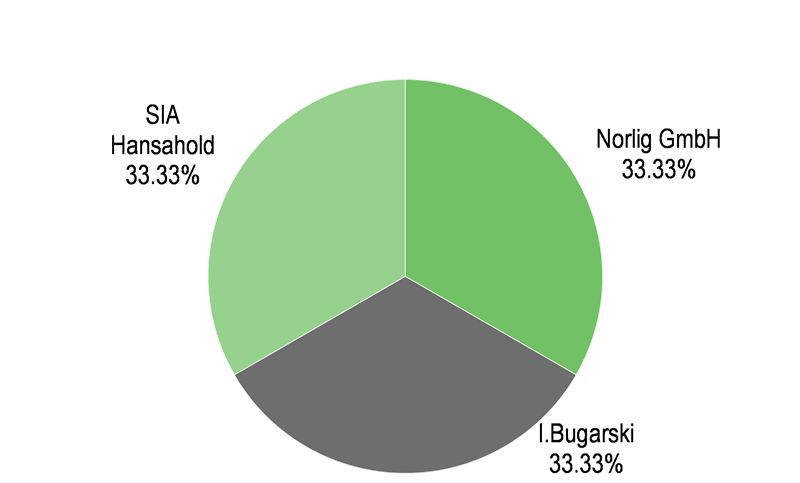2016 and Q117 business review and post IPO outlook
2016 was Noratis’s most successful year in terms of revenues and profitability. This was mainly driven by record sales of almost €38m. Q117 sales represented 67% of FY16 sales at €29.7m.
Given the structure of Noratis’s business and the current asset size, its past business years can be characterised as either ‘acquisition years’ or ‘disposal years’.
Exhibit 4: Turnover by segment 2016 (€’000s) – a disposal year
|
Exhibit 5: Turnover by segment 2015 (€’000s) – an acquisition year
|

|

|
Source: Noratis 2016 accounts
|
Source: Noratis 2015 accounts
|
Exhibit 4: Turnover by segment 2016 (€’000s) – a disposal year
|

|
Source: Noratis 2016 accounts
|
Exhibit 5: Turnover by segment 2015 (€’000s) – an acquisition year
|

|
Source: Noratis 2015 accounts
|
‘Performance’ includes sales revenues, ie proceeds from asset sales and rental income. In addition, it includes the net additions to the real estate asset portfolio the company makes throughout the year.
Noratis acquires assets using cash and secured bank loans where possible. The company has been able to boost its financial power through unsecured loans. The degree of both equity and unsecured loans has enabled Noratis to achieve attractive conditions for bank loans.
Noratis’s balance sheet in Q117 shows €9m in total equity, of which €0.5m was nominal equity. Total net debt amounted to €63.9m. Most of the debt is secured mortgage loans on assets of €75m. Noratis also shows cash of €7.9m. Prior to the IPO, the company converted €1.5m of capital reserves into equity, in order to streamline the balance sheet structure. Hence, the pre-IPO nominal equity was €2m, divided into 2m shares.
The IPO raised gross funds of €17.25m through the issue of 920,000 new shares at €18.75. The total number of shares is now 2.92m. Pro forma equity stands at c €25.5m and pro-forma net debt at c €47.7m (using Q117 reported figures).
Historically Noratis’s new investments were governed by the level of available equity, which needed to be ‘earned’ from asset sales, before re-investing was possible. Noratis also received unsecured loans, which bridged the equity required, at a 7.0-8.0% interest rate. Noratis needed to participate with sufficient equity in acquisitions to allow banks to provide loans within loan-to-value (LTV) brackets, which banks could then refinance themselves at attractive conditions.
Noratis typically finances its acquisitions with 25% equity and 75% debt, which ideally is non-recourse short-term financed by local Sparkassen and banks. This leverage appears high compared to long-term asset holders, such as REITs (maximum 50% under German law), but low compared to standard developers (up to 90%). However, importantly, the majority of Noratis’s debt is secured mortgage loans.
Following the IPO, management suggests that the reduction in the higher interest rate paying unsecured debt and the growth in the asset base will result in a self-funding model of growth. The increased equity base (c €25.5m, ie €9m as of Q117 plus c €16.2m net IPO proceeds) as a result of the IPO should increase the firm’s financial flexibility and acquisition speed, potentially allowing for more attractive deals. At the same time, earnings volatility should be reduced, as net rental income is targeted to cover operating costs in addition to interest costs.
Based on current economics as described in the IPO papers, Noratis aims to significantly increase its asset base and net rental income streams to cover operating costs (SG&A, salaries and interest costs) by 2018/19. Post IPO, Noratis aims to increase its optimisation activities, as this is a key value driver. In addition, management indicates that there will be a targeted sales approach to accelerate disposals without compromising on price.





















